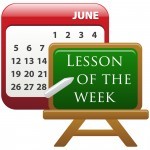Lesson of the Week: Richard Kress- Shallowing the Shaft in Transition
By Wayne | Videos: Lesson of the Week

I’ve known and worked with Richard for over 30 years, and the one thing we have never been able to conquer is his tendency to steepen the shaft in transition. In this video I go over the important elements of the swing that I believe lead to better shaft movement during the swing. Transition is the most complex part of the golf swing, and in order for Richard to get the club to flatten he is going to have to improve his pivot movement (stop getting more vertical in the downswing by adding pelvic tilt), achieve more width at the top (stop folding the right arm and focus more on extensor action), and work on actively moving the right upper arm and elbow inward while the left arm is being pulled by the body. I would expect Richard’s swing to get a bit shorter as the right arm bends less and the hands stay away from the head. He is now in his early 70’s and while he can still move athletically it is not really possible to maintain a full- length backswing without making multiple errors.
Continue reading
